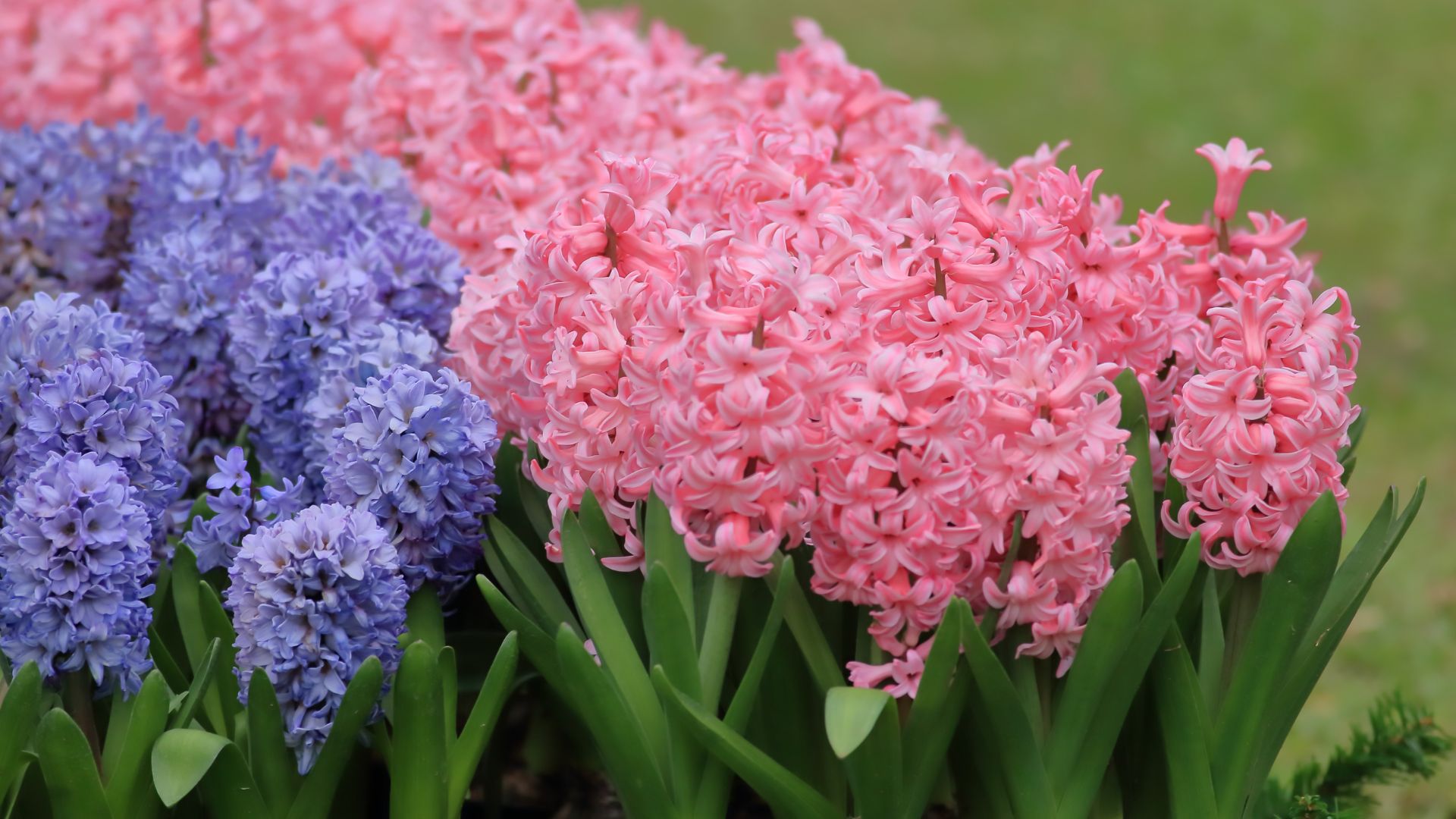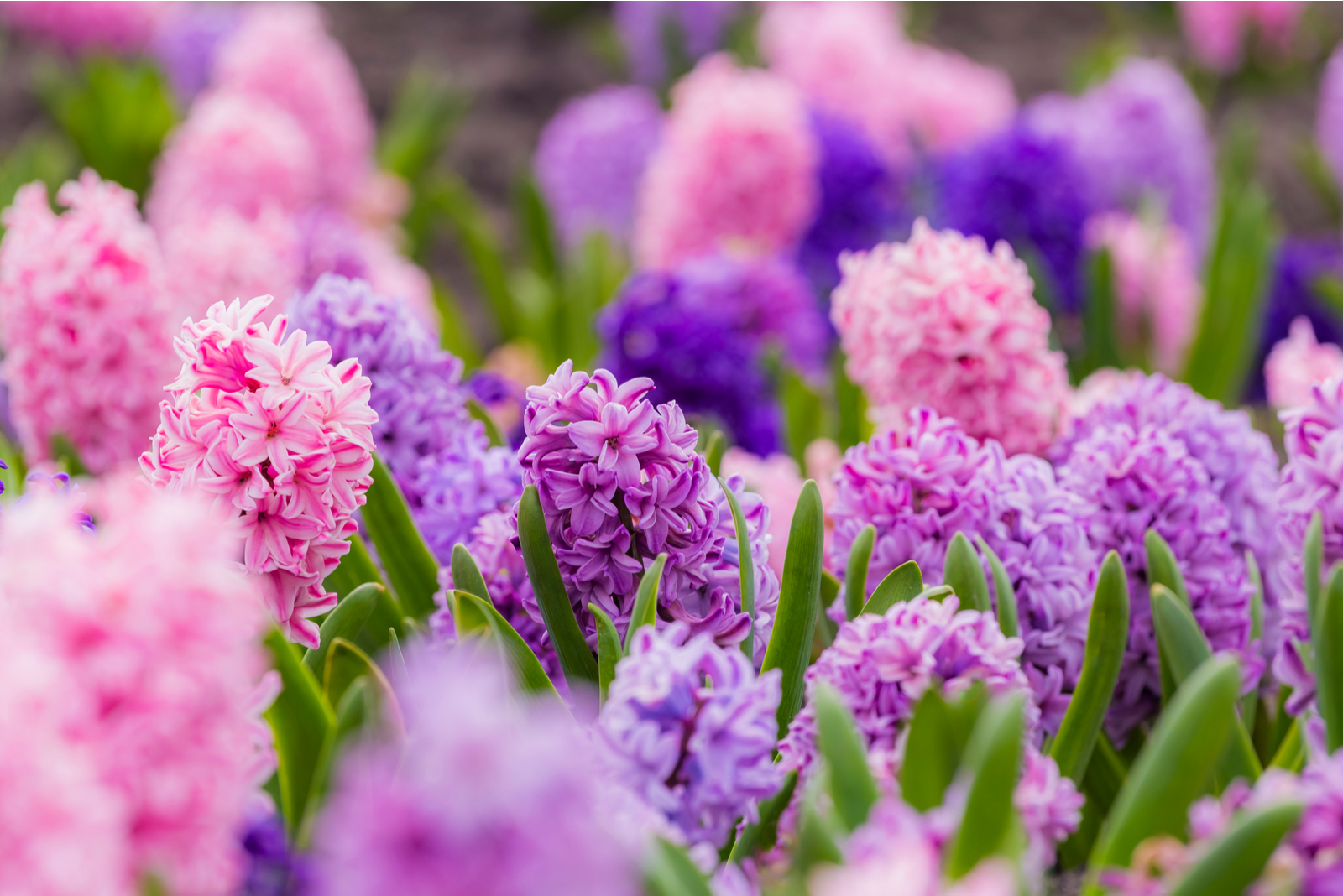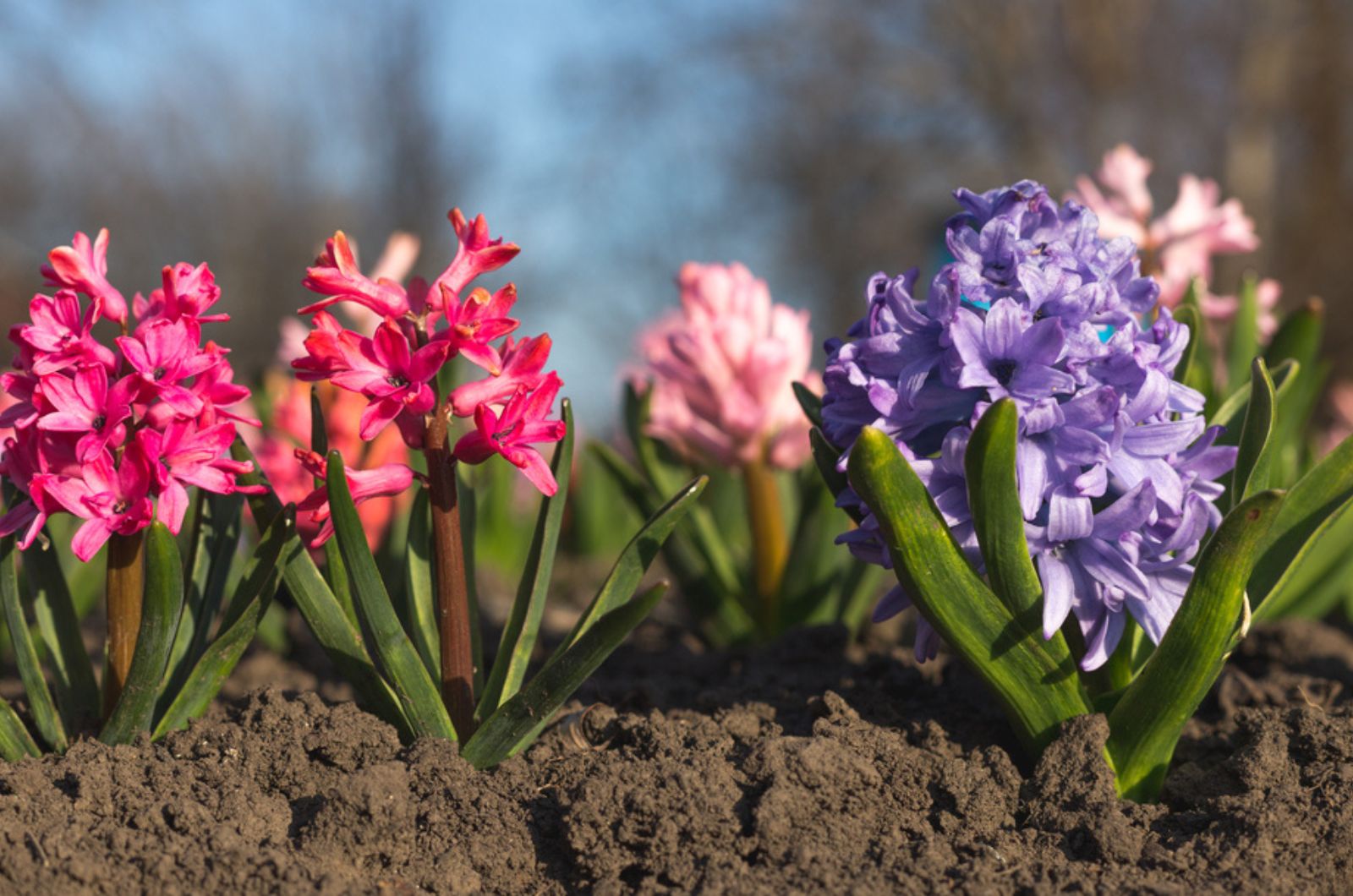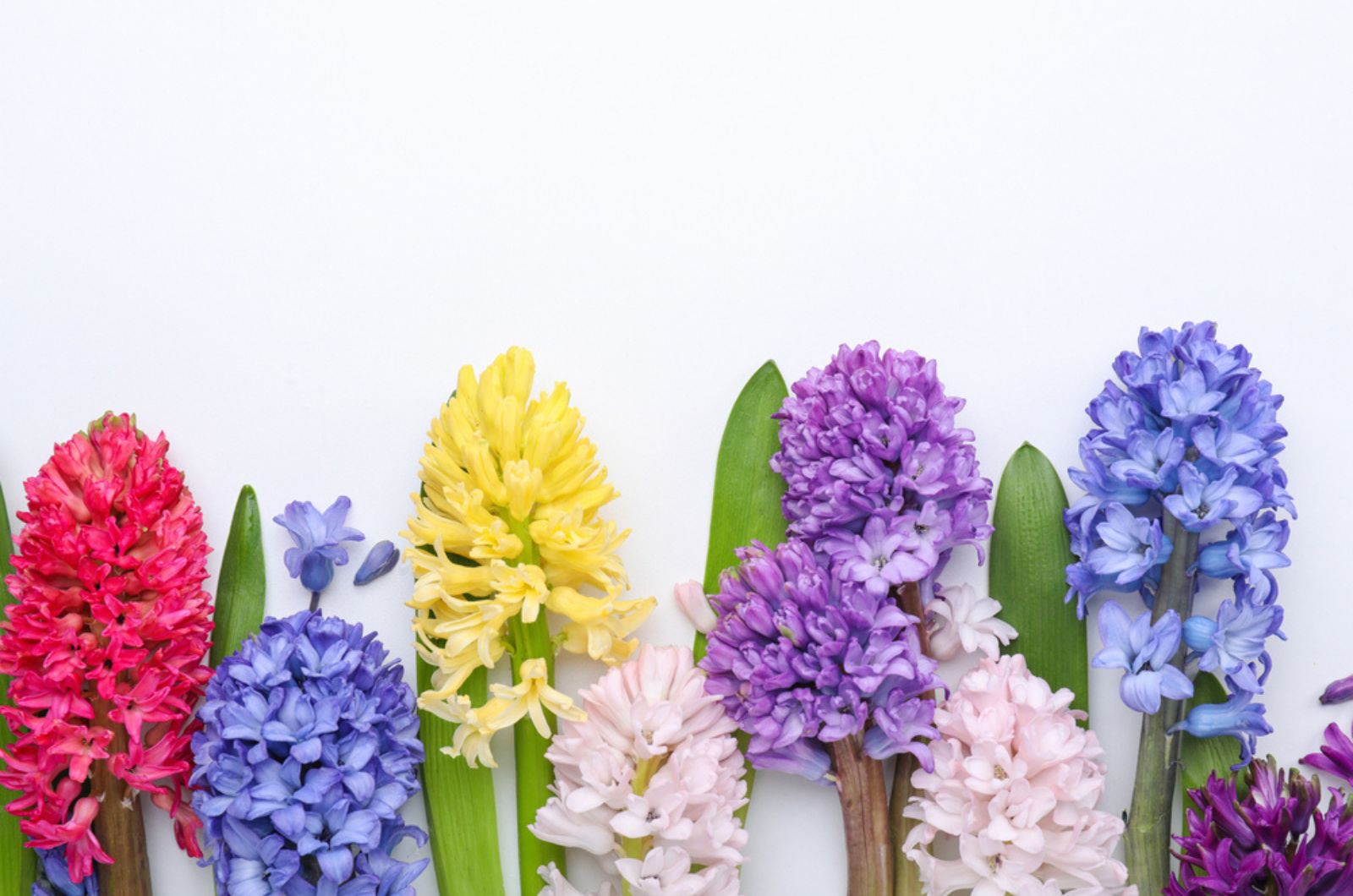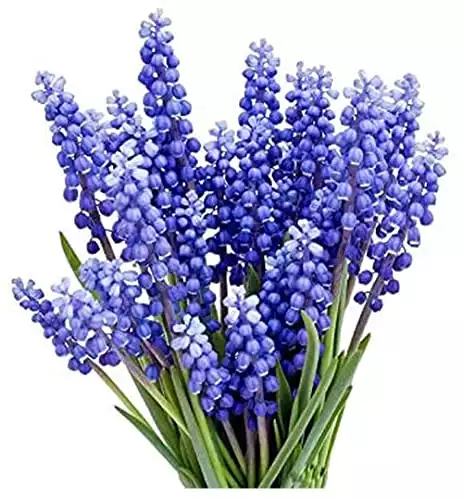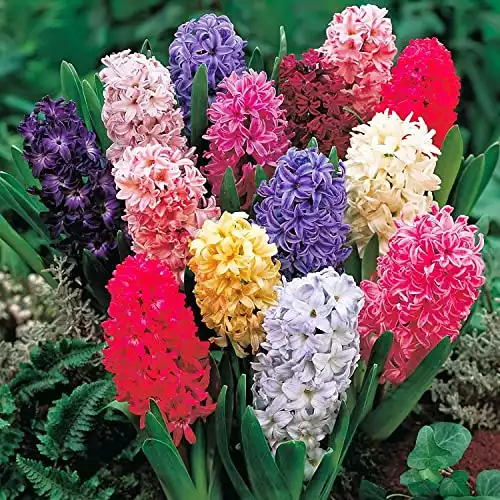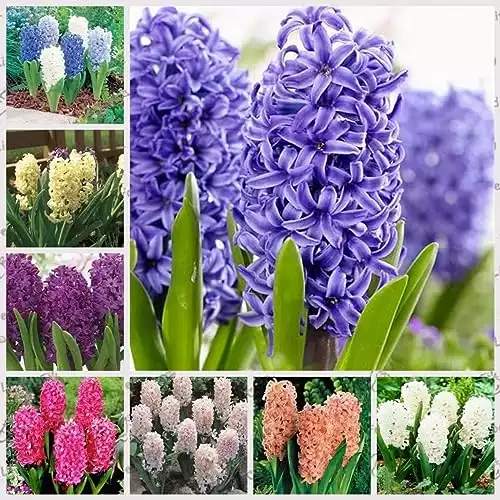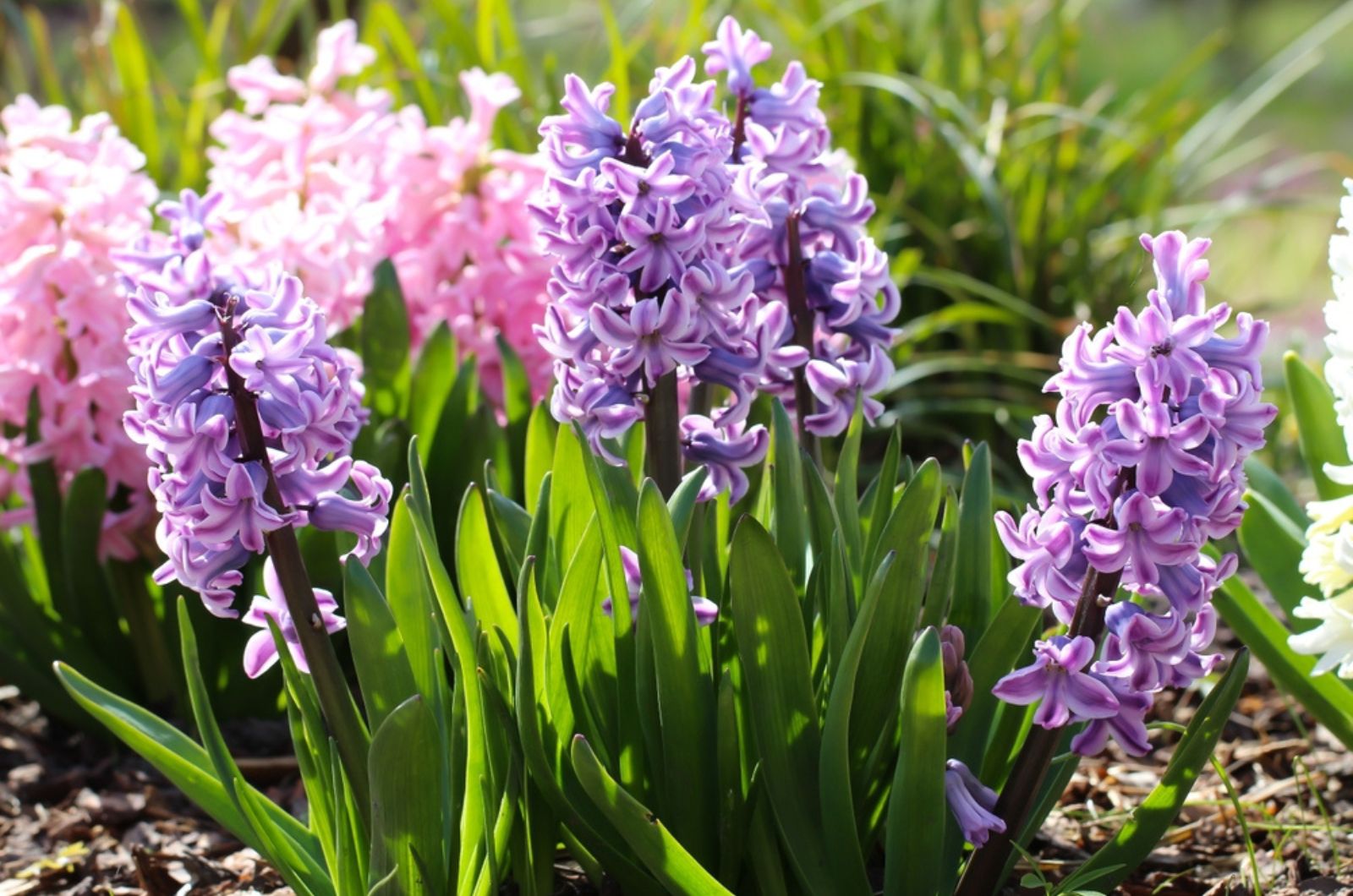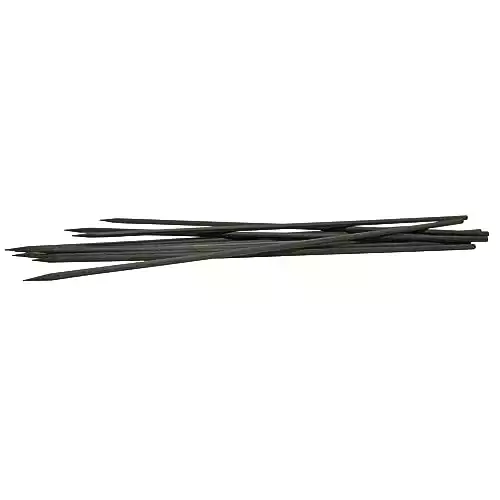When spring arrives, a wonderful flower called the hyacinth takes center stage!
Hyacinths are known for their sweet scent and beautiful colors that catch everyone’s eye. Hyacinths combined with other flowers like tulips create a breathtaking flower display. Plus, they are super easy to grow!
In this article, we are going to cover how to plant and grow hyacinths, and also how to use them in your garden, so stay tuned.
Why You Should Grow Hyacinths
Here are a couple of reasons why you should grow hyacinths in the garden:
1. Mesmerizing Fragrance – these flowers are known for their sweet and delightful fragrance that can quickly spread all over the garden.
2. Resilience – hyacinths are usually not prone to pests and diseases, and they are resilient to poor growing conditions.
3. Diverse Colors – hyacinths offer a wide range of colors to choose from, including pink, yellow, blue, and pastels.
4. Early Bloomers – hyacinths are among the first flowers to bloom in spring. Their appearance signals the end of winter and the beginning of warmer, brighter days.
5. Attracting Pollinators – as bees and other pollinators start emerging in the spring, hyacinths provide an early source of nectar that supports these creatures. With hyacinths, your garden will be filled with butterflies and bees.
6. Easy Plant Care – if you are a beginner gardener, hyacinths are the perfect choice for you. They are relatively low-maintenance and forgiving, and they can adapt to different growing conditions.
7. Cut Flowers – their vibrant blooms and enticing fragrance make them perfect cut flowers.
Design Ideas
I’m sure that you already have a plan for your new hyacinth flowers. However, if you are still not sure how to incorporate them into your landscape, here are a couple of ideas:
• Vibrant Borders –plant hyacinths in a row along the border of your garden beds. Choose a single color for a bold statement or mix various colors for a more vibrant and playful look.
• Fragrance Pathway – plant them along garden paths and enjoy their delightful fragrances and gorgeous colors.
• Window Boxes And Hanging Baskets – fill window boxes or hanging baskets with hyacinth bulbs for a charming display that can be enjoyed both indoors and outdoors.
• Neat Shapes And Rows – grow them close together to create neat circles, rows, and shapes. You can combine different colors or go monochromatic.
• Put Them Close To Your Windows – by doing this, you get to enjoy their fragrance as soon as you open the window.
• Focal Points – use large, showy hyacinth blooms as focal points in specific areas of your garden to draw attention and take everyone’s breath away.
How To Plant Hyacinths
Now, let’s learn how to plant hyacinths!
Planting Tips
We are going to start off with planting time. Fall would be the perfect time to plant hyacinth bulbs because the ground still hasn’t frozen. This allows the bulbs to establish roots before winter and ensures they’re ready to bloom when spring arrives.
Plant them in a sunny location as they thrive in full sun exposure. However, these lovely hyacinths can grow in some partial shade as well. Also make sure that you plant them somewhere with loamy and well-draining soil.
When planting, consider adding some companion plants nearby such as tulips, daffodils, and forsythias. Not only are these plants going to look amazing together, but they will also boost each other’s growth and development.
You can put your hyacinths in the ground, plant them in containers, or even grow them in the water. Here’s how to do all three methods.
1. Ground Planting
Wait until the soil temperature is about 60 degrees Fahrenheit or even lower. However, don’t wait for the ground to freeze.
Follow these step-by-step instructions for planting hyacinths in the ground:
1.Find a sunny spot in your garden and prepare the soil. You can add some organic materials before planting to improve fertility and drainage.
3. Dig holes that are slightly larger than bulbs. Place them 6 to 8 inches below the surface, pointy ends facing up. The ideal distance between the bulbs is between 5 and 6 inches.
4. Fill the rest of the empty space around the bulb and water thoroughly.
2. Container Planting
If you don’t have enough garden space, you can always grow hyacinths in containers. Store hyacinth bulbs in a dry place with temperatures between 40-70 degrees Fahrenheit before planting them.
Make sure to get a container that has drainage holes in the bottom. Fill your containers with loose soil, dig a hole, and place your bulbs as you would with in-ground planting. Fill the rest of the space with soil and water thoroughly.
Now, if you live in the zones 3 through 7, keep your potted hyacinths indoors over winter. If you live in other zones, you can simply leave them outdoors. Your potted hyacinths will bloom in spring.
3. Growing Them In Water
Probably one of the most interesting ways to grow these colorful flowers. You don’t have to worry about the soil or drainage, just make sure to get the right vase. This is how you do it:
1. Put your hyacinth bulbs in the fridge for about 8 to 10 weeks. This is called the chilling phase.
2. After this, simply fill the vase with water and put your bulb in. Make sure that the bulb has just enough space so that the hyacinths can grow peacefully without falling into the water. Make sure that the roots are submerged all the time.
3. Place the vase in a cool and dark spot. You can put it in a garden shed or a cellar. Add water when it evaporates so that the roots are submerged.
4. For the next six weeks, your bulb will start producing new shoots.
5. Once the shoot has grown about 2 to 3 inches, you can place the vase in a warm and bright spot.
6. Don’t forget to turn the vase so that the shoot can grow upright. Soon, you will notice some new flowers. Enjoy them!
The Best Hyacinth Varieties
Luckily, there are numerous lovely varieties that you can choose from. Find one that suits your style the best. Here are some of the most popular ones:
• Anna Marie – it has pink flowers that start blooming in the middle of the spring. These also have a wonderful smell.
• Pink Pearl – this unique cultivar has light pink flowers with thin dark stripes along the middle of the petals.
• Blue Festival – one of the most popular ones. Each bulb can produce numerous flower clusters with gorgeous blue colors. They can last up to three weeks.
• Jan Bos – this cultivar has darker pink blooms. You can combine them with Pink pearls and create a lovely pink garden.
• Hollyhock – this variety has prominent red flowers, great for that burst of color in the garden.
• Woodstock – it has pinkish, warm flowers that bloom throughout the late March and early April.
• Blue Star – a star-shaped flower with vibrant blue colors. These varieties are extremely fragrant.
• Splendid Cornelia – this variety produces light purple flowers. They are usually combined with Woodstock.
• Pink Surprise – it produces dense clusters of bright pink flowers on tall stalks.
• City Of Haarlem – this cultivar is a bit different than the others. It has lovely yellow flowers, unlike most cultivars with purple and pink colors. These varieties look great with daffodils.
• Top White – this hyacinth cultivar has white showy flowers.
Where To Buy
I’m sure that your local garden shops are selling hyacinths. If not, you can always order them online!
Here are some of our top picks available on Amazon:
- Bulb Top Size 9-10 cm
- Expected Blooming Period: Spring to Summer
- Item Weight: 0.2 Pounds
- Sunlight Exposure: Full Sun
- Expected Blooming Period: Winter, Summer
- Sunlight Exposure: Full Sun
- Unit Count: 1.0 Count
- Plant form:hyacinth bulbs
- The hyacinth bulbs are self-sufficient, but multiple hyacinth bulbs are recommended for the best harvest
- Very hardy
How To Take Care Of Hyacinths
We have already mentioned that hyacinths are low-maintenance and quite easy to grow. Here’s what you need to do to take care of them.
Water Requirements
Hyacinths need regular watering, especially during their active growth period in spring. Keep the soil consistently moist – what you can do is check if the top 3 inches of the soil have dried. If so, then you should water them again. If not, postpone watering for a couple of days.
Once their leaves die back in the summer, then 1 inch of water is usually enough for your hyacinths to grow. There’s no need for watering if there is enough rain in your area.
When these flowers enter dormancy, you don’t have to worry about watering them. Start with watering again in late winter or early spring.
Soil Requirements
The best soil for hyacinths is loamy and well-draining. A balanced mixture of clay, sand, and silt is good for your hyacinths.
When it comes to the pH levels of the soil, you should aim for a slightly acidic to neutral pH (6.0-7.0).
You can also apply a layer of mulch around the base of hyacinth plants to help retain soil moisture and suppress weed growth. Remember to avoid soggy soils at all costs!
Light Requirements
As we already mentioned, hyacinths can grow in both full sun and partial shade. If possible, provide them with morning sunlight as it helps dry any moisture on the foliage and reduces the risk of fungal diseases.
In warmer climates, consider planting hyacinths where they receive some shade during the hottest part of the day to prevent excessive heat stress.
While hyacinths tolerate some shade, avoid planting them in areas with deep, constant shade, as this can lead to weak growth and fewer blooms.
Fertilizer Requirements
Although hyacinths are not heavy feeders, they can still benefit from some fertilization. It’s best to apply fertilizer in the fall, just as the hyacinths are developing new roots. This provides them with the nutrients they need to support healthy growth and flowering.
Then, you can also fertilize them in early spring when the new shoots are just starting to emerge from the soil. You can use a slow-release fertilizer with equal or near-equal amounts of nitrogen, phosphorus, and potassium. Look for a formulation like 10-10-10 or 14-14-14.
Follow the manufacturer’s recommendations on the fertilizer packaging for proper dosage. Apply the recommended amount for the size of the planting area.
Avoid using bone meals as they contain solely phosphorus. Plus, they can attract dogs and other animals that dig up the hyacinth bulbs.
Deadheading & Staking
Once the flowers start to fade, remove the spent blooms to prevent the plant from putting energy into seed production. This encourages the bulbs to focus on storing energy for next year’s growth.
If your hyacinths start to fall over, you can put up small stakes specifically designed for hyacinths.
You can use something like these stakes:
- Color: Green
- Brand: Panacea
- Item Dimensions LxWxH: 15 x 0.5 x 0.5 inches
- Style: Tube
- Item Weight: 1 Pounds
Propagation
You can use a basal plate cutting to propagate your hyacinths. Don’t worry, it’s quite an easy process that everyone can get the hang of. Here are the instructions:
1. To find the basal plate, look around the base of the bulb where the roots first appear. Then, cut through the basal plate using a curved scalpel.
2. Now your shoot won’t be attached to the bulb. This is when you have to apply treatment to the cut area because the bulb will be vulnerable to fungal diseases.
3. Find a warm, dark place to temporarily store the bulb. Make sure to position it upside-down.
4. So now your bulb will create more bulbs – each with their own root systems.
5. You can separate the new bulbs from the parent bulb after you notice that they have developed strong roots.
6. These new hyacinth bulbs should be planted in the fall.
Transplanting
If you change your mind about growing hyacinths in a certain location, you can always move them to a different location. Here’s how to transplant hyacinths easily:
1. You should wait for the last of the spring blooms to fade. However, you can also wait until fall (although it’s easier to do it in spring).
2. To remove the hyacinth bulb from the ground, first use a shovel to dig downward into the ground in a circle around the plant. Be careful not to damage the plant’s roots.
3. This is the best time to divide the bulb clump. Then, prepare new holes in your garden for your hyacinth transplants. Slowly place them in the ground.
4. Make sure to fill out the empty space with soil and don’t forget to water deeply.
5. Give them some extra water during these couple of days so that they can establish themselves easily.
6. After some time, continue with regular watering.
Pests & Diseases
We already talked about hyacinths’ remarkable resilience to pests and plant diseases. However, you should still be on the lookout for soft rot, botrytis blight, and yellow disease.
To prevent these plant diseases, you should avoid overwatering and make sure that the airflow is adequate. In case of fungal infection, you can use neem oil or copper fungicide to treat them.
When it comes to pests, they are generally not an issue. You will probably have to deal with squirrels, groundhogs, rabbits, rats, and other creatures that will try to eat your bulbs.
You can put up a fence, grow some squirrel-deterring plants, avoid leaving out food, and consider setting up some traps that will keep these pests away from your lovely hyacinths!

